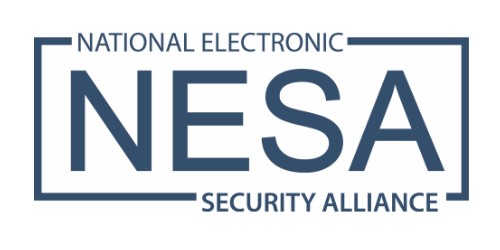
8.28.18 – Security
The single most important thought when securing our schools is maintaining an open, supportive environment that is conducive to learning. School security directors all too often worry that their campuses will become “prisons” if a well-thought-out design or renovation does not take into account the purpose of the facility. As security professionals, this is our primary concern and at the forefront of any security solution we would recommend.
Securing educational facilities continues to be a challenge as communities, school districts, law enforcement, and security professionals struggle to preserve our nation’s educational model. The balance between an engaging learning environment and a secured learning environment continues to be sought, though as we see more improvement and innovation in security technologies, this balance is becoming more easily achieved.
Facial recognition, gunshot detection, and automated response technologies are several security technologies that can improve a school’s ability to detect and respond to violent acts while remaining in the background, nearly unnoticeable by students and faculty.
Crime prevention through environmental design (CPTED) is not new to our society, but innovating its concepts is surely a task for today’s security professional. When applying CPTED principles to a school setting, a security professional should take the following into consideration:
- Using landscaping as a tool to designate school boundaries; restricting unwanted access while remaining aesthetically attractive.
- Observation/Viewpoints: School administration offices should have a clear view of areas of play, gathering and parking; utilizing surveillance cameras with video analytics can provide preventative protection without the constant need for active monitoring. Alerts can be sent directly to the administrator via smartphone or computer.
- Walls, windows and corridors: the overuse of partitions and corridors create blind spots. Walls and windows should be designed to eliminate hiding places for potential perpetrators. Installing clerestory windows – a section of windows above eye level that eliminates unwanted entry – provides natural light and ventilation which is conducive to a healthy classroom and overall learning experience.
As with any new problem, it is important to go back to basics and formulate a security plan which incorporates new technologies and techniques that will help support our public spaces. With today’s technology, it’s no surprise that risk mitigation options harness new technology designed to create a safer and more secure environment while balancing the educational facility’s functionality. The function and level of security of each educational facility are dependent on the institution’s student body, faculty and staff, physical characteristics and layout, the location of the community, and the resources available. All of these factors play a critical role in determining what customized technological security solutions can be implemented.
Leveraging technology through the guidance of a security expert can bolster detection and response capabilities without losing the aesthetics and function of the facility. Technology – such as advanced mass notification, social media scrapping, smart cameras or access control associated with facial recognition – allows the facility to leverage its security system to identify and alert the presence of a known, potentially dangerous individual prior to entrance on campus. By utilizing technology to detect, proactively predict and respond to an incident, threat information could potentially be passed simultaneously between faculty, students and local first responders. For example, advanced analytics and trained operational center personnel create an environment where predictive measures and sound reporting mechanisms give students, parents and faculty early warning or time to evade an incident that may be taking place on school grounds. Other technologies, such as automated lockdown mechanisms, can be integrated into the overall system to provide an even higher-level security plan that incorporates a comprehensive, layered and integrated approach.
Additionally, gunshot detection technology can be implemented, providing security personnel with real-time alerts that engage cameras to focus on the area or point of origin, which, in turn is tied to the operations center and first responder notification protocols. Combined with a comprehensive security plan, technology will enable future designers to incorporate readily available sensors, protective campus furniture and line of sight considerations to better build our schools to a higher level of security while maintaining the educational environment we demand in our society.
The complex physical and operational characteristics of educational facilities can create several challenges for faculty, staff, students and emergency response personnel in their efforts to provide a safe and secure learning environment. With the help of technology, a comprehensive security plan, and design focused on mitigating vulnerabilities and risk, educational facilities can continue to develop security strategies that are designed to not only deter acts of violence but detect and respond to a variety of violent acts in a predictive versus reactive manner. For this unique sector, the priority is to encourage guidance, information for, and direction of appropriate protective measures, which compliment a positive learning environment and support risk mitigation efforts, as appropriate for the school setting.
